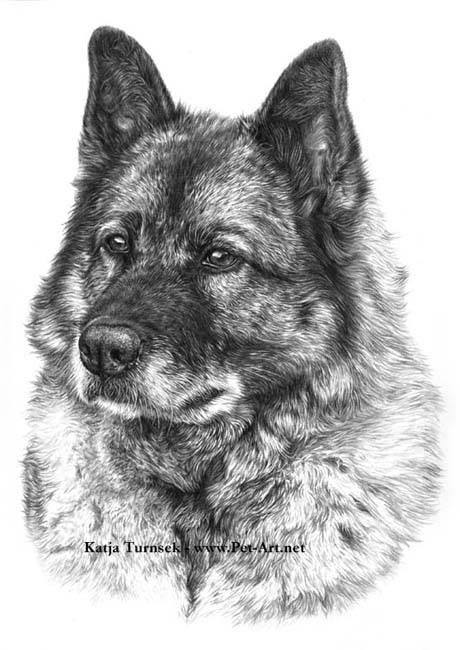
The place – a cave, actually – served as a shelter for around 25 people some years ago. They lived an agricultural lifestyle, ate a bit of wild boar, fish, and occasionally a moose. When they moved on, they left behind tools and a bunch of bones. In fact, they left behind the skeletal remains of a man and four canine skeletons.
Pishaw. We finessed the date of when these people lived. It was more than “some years ago.” In fact, the excavations at the Svarthola site in Jæren, western Norway dates back to 5000 to 4000 B.C.. Two of the dog skeletons were identified by Professor Brinchmann of the Bergen Museum as being of definite Elkhound type, genetic relatives to dogs that predated Christ by four or five thousand years. Some researchers say that as a descendant of the ancient “primitive” Pariah Dog, the Norwegian Elkhound may be even older since Pariah Dog existed 4,000–7,000 years ago.
Some scientists now believe that the Norwegian Elkhound evolved, at least partially, from a grey wolf subspecies found in western Russia and south central Europe, and that it may very well be one of the most ancient of all dog breeds.
If you own an “Elkie,” snuggle up to the dog that contains the DNA of dogs who accompanied the Vikings as they journeyed through Europe and North America. Scratch the neck of a dog whose ancestors were companions to Stone Age men, a dog that in medieval times was known as a dyrehund (“animal-dog” in Norwegian), highly prized as a hunting dog. If you own an Elkhound, look into the eyes of history. If Valhalla exists, your dog’s ancestors are there.
“Taisho,” a Norwegian Elkhound rendering that took over 60 hours of work by Katja Turnsek
www.facebook.com/
http://www.pet-art.net/

So fascinating and now I know why after becoming an Elkhound owner (or slave) some 25 years ago, no other breed will do.
Wonderful photo, Eileen, thank you for sharing it with us!
Wonderfoul Elkie !!!
I LOVE MY ELKIES – PROUD MOMMA OWNER!!!!